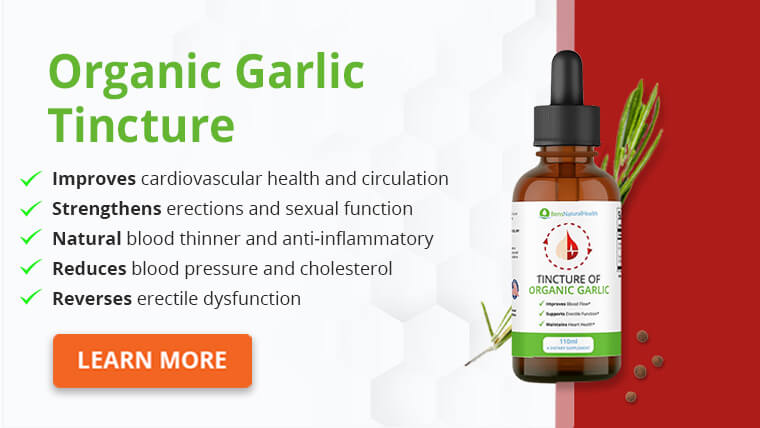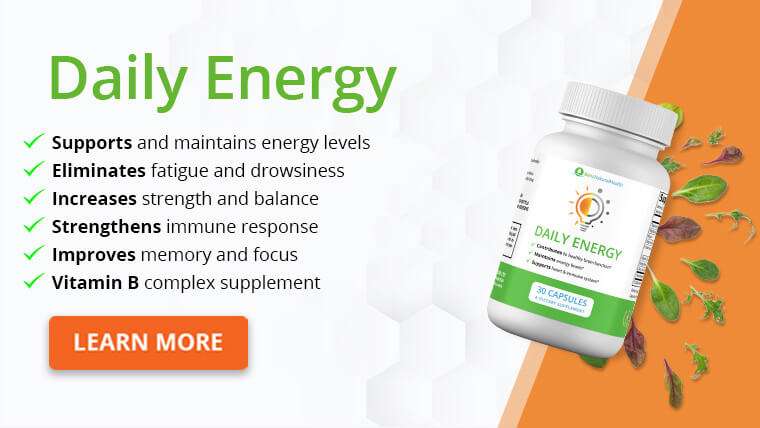Nearly 94 million adults over 20 have high cholesterol – and that’s just in the United States.
High cholesterol can increase your risk of developing heart disease, so it’s important to keep your cholesterol levels in check.
There are prescription medications used to treat high cholesterol called statins, but most people would like to try alternatives and explore a more natural route before taking a statin.
What can you do to naturally lower cholesterol instead of taking statin medications? Keep reading to find out some natural alternatives to statins.
What are statins?
Statins are a class of medications to help lower high cholesterol. They are classified by their intensity level or ability to lower cholesterol.
The first statin was approved for use in 1987. Initially, statins were used for people who had already experienced a heart attack. Statins are now widely used among people at risk of developing heart disease, not just those who have already experienced a heart attack.
This medication comes in tablet form and you’re meant to take it orally once or twice a day, depending on the type.
Statins work by blocking certain liver enzymes responsible for making cholesterol. They tend to lower LDL (bad) and raise HDL (good) cholesterol levels, which is ideal for reducing your heart disease risk.
Like all medications, statins come with possible side effects, so doctors should only prescribe them when they believe the benefits outweigh the risks of taking the medication.
- High-intensity statins can lower LDL cholesterol by approximately 50% or more. Atorvastatin (Lipitor) at 40-80 mg daily and Rosuvastatin (Crestor) at 20-40 mg daily are both examples of high-intensity statins.
- Moderate-intensity statins can lower LDL cholesterol by approximately 30-50%. Lipitor and Crestor at lower doses are considered moderate-intensity. Simvastatin (Zocor) at 20-40 mg daily, Pravastatin (Pravachol) at 40-80 mg daily, Lovastatin (Mevacor) at 40 mg daily, and Fluvastatin at 40 mg twice daily are other examples.
- Low-intensity statins include lower doses of many moderate-intensity statins.

What are statins used for?
Statins are used to help lower your cholesterol levels. Your healthcare provider might recommend a statin if you have high cholesterol levels and other risk factors for developing heart disease, which is the leading cause of death worldwide. You might also be encouraged to start taking a statin if lifestyle changes weren’t enough to lower your cholesterol.
Statins are often recommended if you have diabetes since your risk of heart disease is already much higher than those without diabetes.
The U.S. Preventive Services Task Force recommends low- to moderate-dose statins in adults ages 40 to 75 with one or more risk factors for heart and blood vessel disease and at least a 1 in 10 chance of having a cardiovascular disease event in the next 10 years.
Your risk for heart disease is determined by several factors, including your blood pressure and cholesterol levels. Your healthcare provider can tell you what your heart disease risk factor is.
According to a 2019 meta-analysis, statins were determined to “produce significant reductions in major vascular events irrespective of age.” However, researchers noted that benefits might not be as clear in older patients (older than 75) who don’t already have signs of vascular disease.

What are the side effects of statins?
Statins come with several potential side effects. Everyone reacts to medication differently, so it can take some trial and error to find a statin that is well-tolerated by a patient.
The side effects of statins can be common, uncommon, and rare:
Common side effects of statins
- Headache
- Dizziness
- Feeling sick
- Feeling unusually tired or physically weak
- Digestive system problems, such as constipation, diarrhea, indigestion, or passing gas
- Muscle pain
- Sleep problems
- Low blood platelet count
Uncommon side effects of statins
- Memory problems
- Hair loss
- A sensation of pins and needles
- Inflammation of the liver (hepatitis)
- Inflammation of the pancreas (pancreatitis)
- Skin problems, such as acne and/or rashes
- Sexual problems, such as loss of libido (reduced sex drive) or erectile dysfunction
Rare side effects of statins
- Muscle weakness (myopathy)
- Loss of sensation or tingling in the nerve endings of your hands and feet (peripheral neuropathy)
- Tendon problems
What are normal cholesterol levels?
Here is a summary of ideal or normal cholesterol levels for adults over the age of 21:
Total cholesterol: Less than 200 mg/dL.
LDL (“bad”) cholesterol: less than 70 mg/dL for those with heart disease or at very high risk of heart disease;
- Less than 100 mg/dL for those at high risk of heart disease;
- Less than 130 mg/dL for all other people.
HDL (“good”) cholesterol: greater than 45 mg/dL (the higher, the better); women tend to have higher levels of HDL than men.
Natural alternatives to statins for cholesterol
If you don’t want to take a statin for high cholesterol, you’re not alone. Most people prefer to try making healthy lifestyle changes before starting a statin to lower high cholesterol.
The main natural alternatives to statins to lower cholesterol include diet changes, increasing your physical activity level, and trying natural supplements.
Diet changes
Eating a diet high in saturated fat and added sugar may contribute to high cholesterol levels. Saturated fat is primarily found in animal products like meat and full-fat dairy. But it is also found in some plant-based foods like coconuts.
Sugary drinks and processed foods are the biggest contributors of added sugar in most people’s diets.
The American Heart Association recommends that women consume no more than 6 teaspoons of added sugar per day (24 grams), and men consume no more than 9 teaspoons of added sugar per day (36 grams). Unfortunately, most people eat far more than that, at an estimated 68 grams of added sugar daily.
Added sugar comes in many forms, including:
- Agave nectar
- Barbados sugar
- Barley malt
- Beet sugar
- Blackstrap molasses
- Brown rice syrup
- Brown sugar
- Buttered syrup
- Cane juice crystals
- Cane sugar
- Caramel
- Carob syrup
- Castor sugar
- Confectioner’s sugar
- Corn syrup
- Corn syrup solids
- Crystalline fructose
- Date sugar
- Demerara sugar
- Dextran
- Dextrose
- Diastatic malt
- Diastase
- Ethyl maltol
- Evaporated cane juice
- Florida crystals
- Fructose
- Fruit juice
- Fruit juice concentrate
- Galactose
- Glucose
- Glucose solids
- Golden sugar
- Golden syrup
- Grape sugar
- High-fructose corn syrup
- Honey
- Icing sugar
- Invert sugar
- Lactose
- Malt syrup
- Maltose
- Maple syrup
- Molasses
- Muscovado sugar
- Organic raw sugar
- Panocha
- Raw sugar
- Refiner’s syrup
- Rice syrup
- Sorghum syrup
- Sucrose
- Sugar
- Treacle
- Turbinado sugar
- Yellow sugar
One example of a healthy eating plan to lower cholesterol is the Mediterranean diet, which is lower in added sugar and saturated fat than a typical Western diet. A Mediterranean diet can help increase HDL (good) cholesterol levels while reducing the type of LDL (bad) cholesterol that is most likely to lead to plaque buildup in your arteries (1).
A heart-healthy Mediterranean diet includes foods like these listed below, while limiting added sugar, red meat, refined grains, and processed foods.

Mediterranean Diet Staples
- Vegetables: Tomatoes, broccoli, kale, spinach, onions, cauliflower, carrots, brussel sprouts, cucumbers, etc.
- Fruits: Apples, bananas, oranges, pears, strawberries, grapes, dates, figs, melons, peaches, etc.
- Nuts and seeds: Almonds, walnuts, macadamia nuts, hazelnuts, cashews, sunflower seeds, pumpkin seeds, etc.
- Legumes: Beans, peas, lentils, pulses, peanuts, chickpeas, etc.
- Tubers: Potatoes, sweet potatoes, turnips, yams, etc.
- Whole grains: Whole oats, brown rice, rye, barley, corn, buckwheat, whole wheat, whole-grain bread, and pasta.
- Fish and seafood: Salmon, sardines, trout, tuna, mackerel, shrimp, oysters, clams, crab, mussels, etc.
- Poultry: Chicken, duck, turkey, etc.
- Eggs: Chicken, quail, and duck eggs.
- Dairy: Cheese, yogurt, Greek yogurt, etc.
- Herbs and spices: Garlic, basil, mint, rosemary, sage, nutmeg, cinnamon, pepper, etc.
- Healthy Fats: Extra virgin olive oil, olives, avocados, and avocado oil.
You might be wondering how cholesterol in foods impacts your cholesterol levels. This is one of the most talked-about aspects of diet regarding managing blood cholesterol levels.
All animal products contain cholesterol, and foods like eggs, organ meats, and shellfish are particularly high in cholesterol.
The recommendations behind diet and cholesterol seem to change often, which can be confusing for both people with high cholesterol and healthcare providers. The bottom line is that if you have high cholesterol, it’s probably a good idea not to eat large amounts of foods high in cholesterol regularly.
Aim for a balance, with some cholesterol-containing foods and plenty of plant foods free of cholesterol to balance them out.
In other words, you don’t have to avoid eggs for the rest of your life if you have high cholesterol, but eating them every day for breakfast might not help you reduce your cholesterol levels.
Physical activity
Being physically active can help lower your cholesterol. Aerobic exercise (the kind that makes you more short of breath from exertion) of low and moderate-intensity can result in a significant reduction of LDL cholesterol, which is the kind of cholesterol associated with an increased risk of heart disease (2).

Natural herbs and supplements
Niacin (vitamin B3) and red yeast rice are popular natural supplements for lowering cholesterol (3, 4)
Red yeast rice containing monacolin K is banned by the FDA because it’s chemically identical to lovastatin, one of the prescription statin drugs (5).
Supplements containing fiber in the form of psyllium are among other popular natural alternatives to statins for high cholesterol. According to a study, consuming around 5 grams of psyllium twice daily produced significant reductions in total and LDL cholesterol in people with high cholesterol (6).

Alternative medications to statins that lower cholesterol
Other types of medications commonly used to treat high cholesterol include bile acid sequestrants, niacin (at a higher dose than many over-the-counter types), nicotinic acid, and fibrates. These medications might not reduce cholesterol levels as drastically as statins but are a good choice for those who prefer not to take statins or who don’t tolerate them.
Niacin might also help lower high triglyceride levels, which can accompany high cholesterol.
Conclusion
Statin drugs can effectively lower cholesterol, but they can come with unwanted side effects and risks.
Natural alternatives to statins include eating a heart-healthy diet similar to a Mediterranean diet, being regularly physically active, and considering other more natural alternatives like niacin.
If you’re intolerant of statins but can’t control your cholesterol without them, you might be a candidate for non-statin cholesterol medications.
You should always consult with your healthcare provider and have regular cholesterol screenings to determine the best course of action for you as an individual.
Explore More

10 Natural Cholesterol Lowering Remedies Supported by Science.






